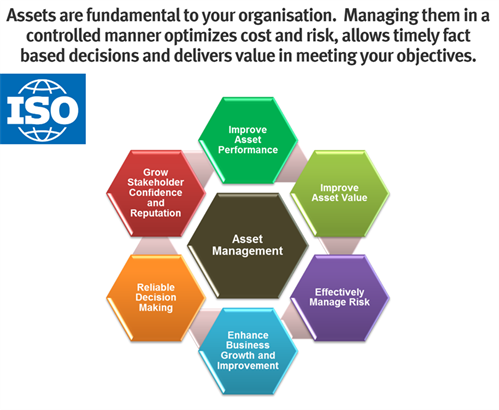ISO 55000 for Tertiary Education
In light of the topic, we called on the subject matter expertise of Mr Peter Way PSM from our Business Associate, IPWEA, to jointly deliver this Webinar. Peter Way represents IPWEA on the Standards Australia mirror committee that has been involved with the International Committee in writing the Standards, which are currently in the review process. This provides Peter with a unique insight to both the Standards and the on-going refinements. This is great example of where SPM Assets looks to provide leadership by leveraging its business associates to progress and develop best practice in Asset Management across our clients and channel partners.

Some of the key insights and observations presented were:
- The new ISO 41001 Standard on Facilities Management is in the pipeline. Work on the first two International Standards has already finished and the publication of ISO 41011, Facilities management – Vocabulary, and ISO 41012, Facilities management – Guidance on strategic sourcing and the development of agreements, is available through SAI Global. The new management system standard ISO 41001, Facilities management – Management systems – Requirements with guidance for use, is currently under development and will further increase awareness and support the development, implementation and maintenance of effective facilities management regimes in all sectors of industry and commerce worldwide.
- One of the main thrusts of the ISO AM Standards is achieving best value from assets through an appropriate balance between cost and performance where you might think about your risk appetite as being the fulcrum on which to balance the objectives of delivering services at the lowest possible lifecycle cost.
- A fundamental from an alignment to the Standards is to change thinking from an asset-centric perspective to instead recognise that the assets are only there to provide value through the products or services they deliver. Further, a focus on alignment to ensure that the overarching organisational objectives are translated down into AM objectives and then AM plans etc. Asset Management translates the organisational objectives into technical and financial decisions, plans and activities.
- The Standards are all about a Management System for Asset Management and identifies the WHAT to do. Tools such as the International Infrastructure Management Manual, SPM Assets Software, NAMS.Plus and Practice Notes are the Tools that assist in the “How to do” it, and align with ISO 55000.
- The key benefits of aligning to the ISO 55000 were highlighted as:
- Performance improvements
- Cost improvements
- Management of risk
- Assurance of business growth and improvement
- Reliable decision making
- Enhanced stakeholder confidence through compliance and improved reputation.
- Whilst ISO 55001 is a great step forward in driving better Asset Management practice, it does have some limitations. A key consideration should be to always be aware of the potential pitfalls of getting into just a ‘tick the box’ type of approach. ISO 55001 does not purport to be best practice but rather competent levels of Asset Management. The Standard does however help an organisation determine ‘best appropriate practice’ for an organisation – what it needs to do in order to deliver stakeholders’ objectives - this is where the use of the ‘How To’ tools can help.
- Any alignment to ISO 55000 should be the start of the journey to best practice via continuous improvement. A key to this is increasing the type, quality and extent of relevant data on components that make up the assets to be managed. This is best achieved through the processes, systems and methodologies such as are embedded within the SPM Assets software. The centralisation of data specifically for long-term planning for, and implementation of, Asset Management best practice, makes the difficult easier and the complex simple through fact-based decision making based on the best available information and insights.
Subscribe to our Broadcast
Our monthly newsletter featuring asset management tips and insights, and the latest SPM Assets news.